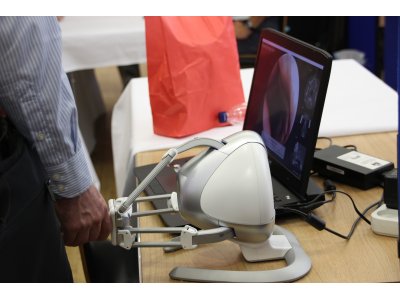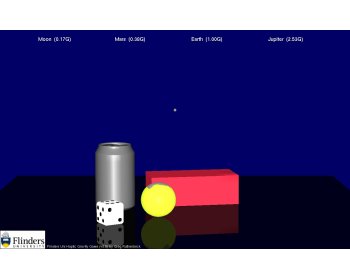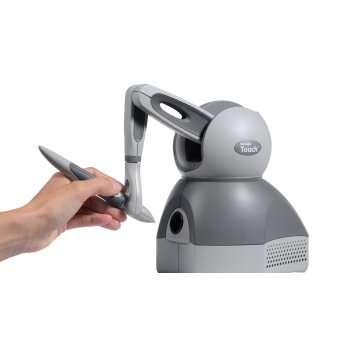Learning occurs naturally through play. Exagen Oy are experienced creators of original gamified learning experiences that enhance student engagement & learning.
Gamification fuels better learning. Tactile interaction (haptics) takes that a step further. Our original research has demonstrated that haptic interaction results in faster learning and improved recall in a real-world context. Contact us to learn more about how haptically interactive simulations can improve training efficiency in your organization.
Some examples of our gamified learning software
Trainee surgeons safely practicing nasendoscopy

Developed by Dr Greg Ruthenbeck (Director & Founder of Exagen) in collaboration with expert clinicians, the Flinders Nasendoscopy Simulator includes gamified learning tasks. The simulation displays the name of an antomical location, and the trainee must move the endoscope camera inside the simulated sinus anatomical model so that the view shows a marker at the named location. This tests the trainees ability to navigate the sinus anatomy safely (maximum forces and "scratches" are recorded) and allows the trainee to demonstrate their understanding of common antomical nomenclature (names of structures and locations).
This nasendoscopy training simulation is controlled via a real endoscope attached to a haptic device. In this way the user makes very similar movements, and receive similar tactile feedback, thereby improving their readiness for safe interaction with patients. This is a difficult part of the anatomy with many important and sensitive nearby structures that a trainee sinus surgeon must learn safely, a challenge without access to simulation-based systems like this. Ruthenbeck et. al.'s nasendoscopy simulation is included in this review1 of the leading neurosurgical simulations (Aug 2019, Nature Springer's Neurosurgical Review journal).
1: Baby et. al., “A review of virtual reality simulators for neuroendoscopy”, Neurosurgical Review, Aug 2019.
Exagen are developing new simulation-based training systems.

Gamified Learning
Talking about physics isn't as good as demonstrating physics. Demonstrating physics isn't as good as experiencing physics. Our game simulates the gravity of different planets for different everyday objects: a tennis ball, a soda can, and a red brick. In Earth's gravity, the soda can is a familiar weight, but take it to a planet with over 1G of gravity and it get's heavier. Take it to the moon, where the gravity is about 17% of Earth's, and the soda can is very light, yet it still has the same mass and therefore the same inertia. In this way our Gravity Game gives high-school students a hands-on appreciation for what inertia is, how mass remains unchanged, and how weight is a consequence of gravity that varies on different planets or in outer-space.
We developed the game to run on Windows using C++ and OpenGL. The user interacts via a haptic device (for example, a Novint Falcon).
Early schooling spelling game
Preparing students for a digital world can begin alongside learning to spell and write. The result of a weekend hackathon, our software for children around 5-8 years of age uses the Australian schools curriculum. When the player taps/clicks on a word, synthesized speech says the word, and the word is hidden and replaced with a box where the player must enter the word with the correct spelling. Incorrect spelling is only penalized in that the player cannot proceed without entering the word correctly. The layout of each screen (page) of the game is identical to the homework sheets that students take home. The content of the game can be customized.

Haptics - Control you can feel
The most common desktop haptic devices are the Novint Falcon and the Geomagic Touch.
With over 10 years experience in research & development of world-class haptic interaction for surgical training simulations, we are applying haptics to new applications to leverage unique benefits. Haptic interfaces are at the core of intuitive computer-human interfaces; Touch intuitively informs interaction. Force-feedback devices can also provide new opportunities in training and rehabilitation, since the controller can drive movements in 3D.
With over 15 years of research, development, and university teaching experience, Exagen uses haptics to increase the impact of simulation-based learning.